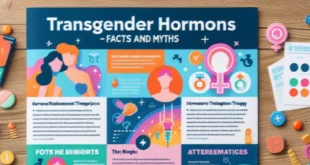Continuing contact between transsexual parents and their children has met with significant opposition. Two areas of concern are effects on the gender identity of the children and reactions by the children’s peer group. Eighteen children, 10 boys, 8 girls of 9 transsexual parents, have been evaluated. Their ages range from 5-16 years. All live with or have regular contact with their transsexual parent. No child has gender identity disorder. No child has had extensive conflict with the peer group. All continue positive relationships with their transsexual parent.
Introduction
In 1978 I published a paper on sexually atypical and gender atypical parents and their children (Green 1978). It described 21 children being raised by lesbian mothers and 16 by transsexual parents. Since that paper 20 years ago, none other has been published describing a series of children of transsexuals. This absence explains why that report was cited as a stand alone in the case brought by a female-to-male transsexual in his recent fight for parental status before the European Court of Human Rights (Case of X, Y and Z v United Kingdom, 1997).
Opposition is strong to a transsexual continuing in a parenting role during or after gender transition. It derives in part from concerns that the children will become confused in their own gender identity during critical years of psychosexual development. Although to those concerned about this posited impact no developmental period is safe harbour, the first handful of years are seen as exceptionally vulnerable. This is during the setting of basic gender identity and resolution of the posited Oedipal conflict. Early adolescence when sexual orientation manifests strongly, perhaps reviving earlier Oedipal conflicts, is another arguably vulnerable period. The second focus of concern impacting on the best interests of these children is the reaction of their age mates, the peer group. Will the children be teased, ostracised, bullied in consequence of their parent’s transsexualism?
But, beyond these presumably empirically testable concerns, there is more. There are the feelings of betrayal, abandonment and hostility of the non-transsexual parent. Many are so enraged at the transsexual parent that they defiantly oppose any contact with the child. As custodial parent, some non-transsexual parents instil in the child a distorted, negative image of the absent (or rarely present) transsexual parent, the Parental Alienation Syndrome (Gardner 1978). In time, the child, too, opposes continuing or renewed contact. The concern to courts here is that the conflict and trauma imposed on the child of enforcing contact with one parent when the other is implacably opposed, and perhaps the child too is opposed, is greater than terminating contact.
Are the former noted issues concerning the children’s gender identity and peer group reaction to be considered as independent of the latter consideration of uncompromising parental opposition? They should not be. To the extent research demonstrates the absence of an objective basis for concern for the child’s welfare as a direct effect of the transsexual status of one parent, the other parent’s opposition becomes increasingly irrational. It should be given less legal weight on the scales of justice in judicial determinations.
During the past four years I have interviewed transsexual parents at Charing Cross Hospital in London. Many have not seen their children for years. Several abdicated their parenting role because they feared their transsexualism would be harmful to the child, others because their former spouse had been adamantly opposed to contact and the transsexual believed that a legal fight was hopeless. There have been other families, however, where the transsexual parent has continued to live with child(ren) and spouse during the gender transition of the “Rea.l Life Test” or has maintained frequent parenting contact, though living apart. An outline of these children is drawn here.
There are 18 children. They are from 9 families, with 10 children boys and 8 girls. Six transsexual parents are male-to-female, three are female-to-male. The children’s age range is 5-16 years, with 4 ages 5-7, 6 ages 8-10, 4 ages 11-13 and 4 ages 14-16. The frequency distribution is shown in Table l.
Areas of focus in interviewing these children and parents have been the two typically cited as potentially problematic for the children: their own gender identity and peer group stigma.
Gender Identity
None of the children meet the DSM IV or ICD 10 criteria for “gender identity disorder”. One boy and one girl had thoughts about changing sex briefly when informed of the transsexualism of the parent, but the curiosity did not evolve into a desire to change sex and the curiosity did not continue. No clinically significant cross-gender behaviour is reported.
Peer Group
Three children have been selective in informing peers of the transsexual status of their parent. They informed those whom they thought they could trust with the information and who would not tease or spread it indiscriminately. Three children experienced some teasing; it was transient and resolved. The remainder report no problems.
Understanding the Parent
Three children do not remember their parent in the parent’s birth sex. The others became aware of the transsexual status 1-3 years before my interview. The children have a reasonable understanding of the parent’s gender dysphoria and the treatment process. Some examples of their perceptions of their parents follow:-
Seven year old boy with male-to-female transsexual parent (father):
“Linda. wants to be a woman. Linda wants to start a fresh life. She likes living as a woman. I think that is happy for her. At first (when I was 4’/2) I didn’t quite understand. As I got older, I realized she must be happy living as a woman, so I’ll just accept that.”
Does Linda have a penis?
“She is going to have it taken off.”
What is your worry?
“The thing I worry about is if he gets injections that the wrong amount would be given and something would go wrong… Is there a chance he could die in the operation?”
Nine year old boy with female-to-male transsexual parent (mother):
“She will change into a man with plastic surgery.”
Why?
“My dad (biological mother) reckons that God had made a mistake when he was born.”
Seven year old girl with male-to-female transsexual parent (father):
Why does your daddy dress as a lady?
“It’s a better life.”
Sixteen year oId boy with female-to-male transsezual parent (mother):
“Jim is a bloke. The only thing missing is a dick.”
Ten year old boy with male-to-female transsexual parent (father):
How do you feel about it?
“It’s alright.”
Why is your daddy doing this?
“He does not like being a man.”
Eleven year old sister:
“My dad’s having a sex change. He is turning into a woman.
Why?
“He feels like a woman”
How do you feel about it?
“I feel OK about it.”
Fourteen year old daughter with female-to-male transsexual parent (mother):
“My Mother’s not happy in the body she is in. My mom is a lot happier since starting to live as who she wants to be. When I was 13, my mother said, ‘I want to be a man, do you care?’
I said, no, as long a you are the same person inside and still love me. I don’t care what you are on the outside… It’s like a chocolate bar, It’s got a new wrapper but it’s the same chocolate inside.”
Ten year old brother:
“Jim (mother) is my dad because he is having a sex change. It’s alright with me. If it makes Jim happy, it makes me happy.”
Conclusion
Available evidence does not support concerns that a parent’s transsexualism directly adversely impacts on the children. By contrast, there is extensive clinical experience showing the detriment to children in consequence of terminated contact with a parent after divorce.
Can anything be done to help maintain these families? Courts can be educated regarding clinical or research findings. Transsexual parents may profit from engaging with children in counselling sessions in anticipation of, or during, the gender transition process where concerns and questions can be addressed. Marital counselling early in the transition process could mitigate the hostility of the non-transsexual parent. Hopefully, the non-transsexual parent’s feelings of disappointment, loss and perhaps anger can be placed in perspective to the benefit children derive from contact with two parents. Children can also benefit from counselling, when troubled, after parent sex reassignment (Sales, 1995)
The cases described here and twenty years earlier demonstrate that transsexual parents can remain effective parents and that children can understand and empathise with their transsexual parent. The cases demonstrate that gender identity confusion does not occur and that any teasing is no more a problem than the teasing children get for a myriad of reasons.
Children’s best interests are not served by the bullying tactic of implacable parental opposition by one parent to continuing contact with both parents. Divorce may be inevitable between parent and parent, but divorce need not be inevitable between parent and child.
References
Case of X, Y and Z v United Kingdom (75/1995/581/667), European Court of Human Rights, Strasbourg, 1997.
Gardner, R (1998). The Parental Alienation Syndrome, Second Edition. Cresskill, New Jersey, Creative Therapeutics.
Green,R (1978). Sexual identity of thirty-seven children raised by homosexual or transsexual parents. American Journal of Psychiatry 135: 692-697.
Sales, J. (1995). Children of a transsexual father: a successful intervention. European Child and Adolescent Psychiatry 4:136-139.
Table 1
Transsexual Type | Number of Sons | Ages | Number of Daughters | Ages
M-F | 1 | 7 | – | –
F-M | 1 | 16 | 2 | 14, 12
M-F | – | – | 2 | 5, 7
M-F | 1 | 10 | 1 | 12
F-M | 2 | 8, 10 | – | –
F-M | 1 | 10 | 1 | 14
M-F | 2 | 9, 12 | – | –
M-F | 2 | 10, 13 | 1 | 16
M-F | – | – | 1 | 5
A Research Paper by Professor Richard Green
Gender Trust – 2003, This information sheet is distributed by the Gender Trust and is intended as a basis for information only. The Gender Trust does not accept responsibility for the accuracy of any information contained in this sheet.
 Lesbian, Gay, Bisexual, Transgender & Intersex News Lesbian News, Gay News, Bisexual News, Transgender News, Intersex News, LGBTI News
Lesbian, Gay, Bisexual, Transgender & Intersex News Lesbian News, Gay News, Bisexual News, Transgender News, Intersex News, LGBTI News




